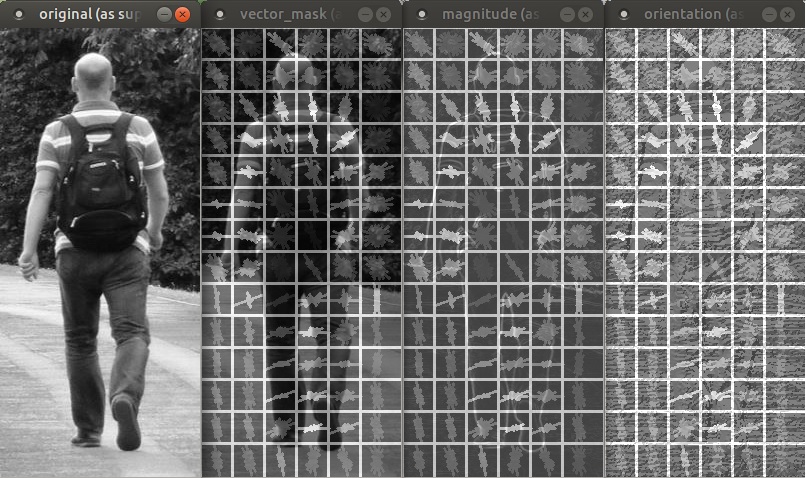C++ - Simple CPU implementation of the HOG (Histogram of Oriented Grandients) based on OpenCV's utility functions.
The reference article: https://lear.inrialpes.fr/people/triggs/pubs/Dalal-cvpr05.pdf
OpenCV 3
./clean.sh; ./build.sh
./run_person.sh
int main(int argc, char* argv[]){
// Open an image
cv::Mat image = cv::imread(argv[1], CV_8U);
// Set up the HOG object
size_t cellsize = 8;
size_t blocksize = cellsize*2;
size_t stride = cellsize;
size_t binning = 9;
HOG hog(blocksize, cellsize, stride, binning, HOG::GRADIENT_UNSIGNED, HOG::L2hys);
// example how to save and load a HOG model
hog.save("hog.ext");
hog = HOG::load("hog.ext");
// Process the whole image
hog.process(image);
// Retrieve HOG from a ROI/window/sub-image
cv::Size window(50,100);
#pragma omp parallel num_threads(8)
{
#pragma omp for collapse(2)
for(int x=0; x<image.cols-window.width; x += cellsize){
for(int y=0; y<image.rows-window.height; y += cellsize){
cv::Rect roi = cv::Rect(x,y, window.width, window.height);
auto hist = hog.retrieve(roi);
// Print resulting histograms
std::cout << "Histogram size: " << hist.size() << "\n";
for(auto h:hist)
std::cout << h << ",";
std::cout << "\n";
}
}
}
}This project is licensed under the MIT License - see the LICENSE.md file for details
